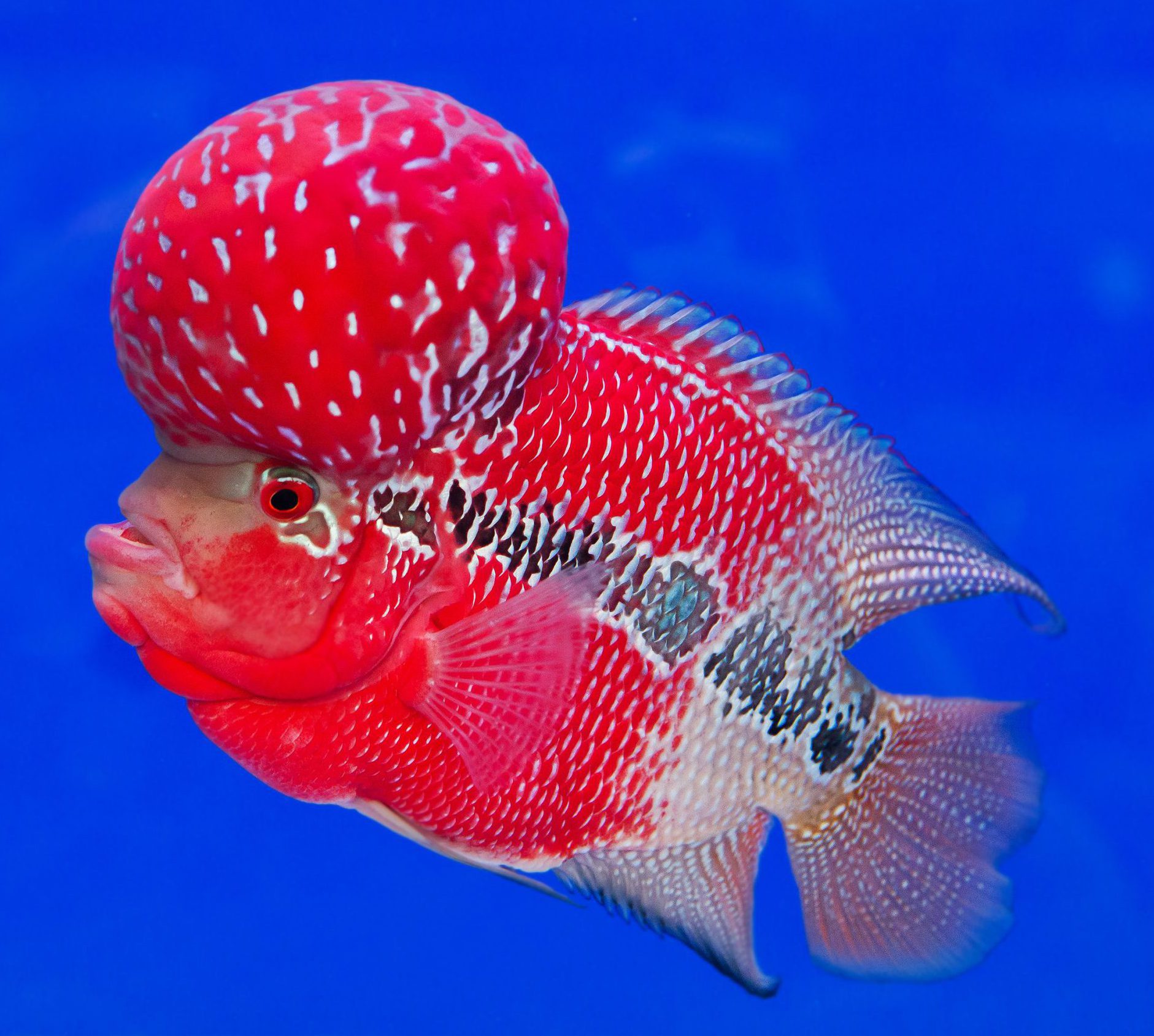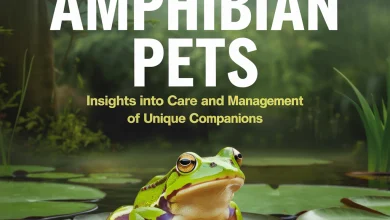Flowerhorn Cichlids: A Colorful and Charismatic Fish for Your Aquarium

Flowerhorn cichlids are one of the most visually stunning and charismatic freshwater fish available to aquarium hobbyists. Known for their vibrant colors, unique body shapes, and prominent “nuchal hump” (the large forehead bump), Flowerhorns have captured the attention of fish enthusiasts around the world. These hybrid fish were developed through selective breeding and are known for their intelligence and personality. If you’re interested in owning a Flowerhorn, here’s everything you need to know about their care, tank setup, and maintenance.
1. Why Choose a Flowerhorn Cichlid?
Flowerhorns are unique in the aquarium world for several reasons:
- Striking Appearance: The most eye-catching feature of Flowerhorn cichlids is their vibrant coloration, which can range from bright reds and oranges to blues and yellows. Their large, bulbous nuchal hump makes them stand out even more.
- Personality: Flowerhorns are known to be interactive and can develop a bond with their owners. They often recognize their caretakers and will come to the glass when approached.
- Intelligence: These fish are smart and can even learn simple tricks, such as following your finger around the tank or taking food directly from your hand.
However, Flowerhorns are also large and territorial, requiring careful attention to their habitat and care needs.
2. Setting Up a Flowerhorn Cichlid Tank
Flowerhorn cichlids are large, active fish that require a spacious tank and specific water conditions to thrive:
- Tank Size: Since Flowerhorns can grow up to 12-16 inches (30-40 cm) in length, they require a large tank. A minimum of 75 gallons (283 liters) is recommended for a single Flowerhorn. For a pair or additional tank mates, 100+ gallons is ideal.
- Water Parameters:
- pH: Flowerhorns prefer a pH range between 7.4 and 8.0.
- Temperature: Keep the water temperature between 78-86°F (25-30°C).
- Water Hardness: Moderately hard to hard water is suitable for Flowerhorns. Ensure water conditions remain stable, as they can be sensitive to rapid changes.
- Filtration and Flow: Flowerhorns are messy eaters and produce a significant amount of waste, so a high-quality filtration system is essential. Use a powerful canister filter or sponge filter to maintain good water quality. Regular water changes (about 30-50% weekly) are necessary to keep the environment clean.
- Substrate and Decorations: Flowerhorns are known to rearrange their environment by digging in the substrate and moving objects around. Use a sand or fine gravel substrate and keep tank decorations to a minimum to avoid stress or injury to the fish. They will appreciate some hiding spots, but make sure there is plenty of open space for swimming.
3. Diet and Nutrition
Flowerhorn cichlids are carnivores with a hearty appetite. A varied diet will help them maintain their bright colors and robust health:
- Pellets: High-quality cichlid pellets should be the staple of their diet. Look for specialized Flowerhorn pellets that are designed to enhance color and provide balanced nutrition.
- Frozen and Live Foods: Flowerhorns enjoy a variety of foods, including frozen or live bloodworms, brine shrimp, krill, and earthworms. These high-protein foods should be offered occasionally as treats to promote their health and growth.
- Vegetables: While they are primarily carnivorous, offering small amounts of blanched vegetables like peas or spinach can help with digestion.
- Feeding Frequency: Feed adult Flowerhorns once or twice a day. Be careful not to overfeed, as they are prone to obesity.
4. Flowerhorn Behavior and Tank Mates
Flowerhorn cichlids are known for their territorial and aggressive behavior:
- Aggression: Flowerhorns are highly territorial, especially as they mature. They are likely to attack other fish, particularly those that enter their perceived territory. For this reason, Flowerhorns are often kept alone.
- Tank Mates: If you do want to introduce tank mates, it’s best to choose other large, robust, and aggressive fish. Some potential companions include larger cichlids like Oscars, Jack Dempseys, or Green Terrors. However, introducing other fish always carries the risk of fighting, and you may need to be prepared to separate them.
- Personality: Despite their aggression towards other fish, Flowerhorns can be surprisingly social and engaging with their owners. They often respond to their caretaker’s presence and will follow movement outside the tank, making them interactive pets.
5. Common Health Issues
Flowerhorn cichlids can be prone to a few health problems, especially if their water quality or diet is not maintained properly:
- Bloat: Flowerhorns are susceptible to digestive issues, particularly bloat, which can occur if they overeat or consume too much protein-rich food. To prevent this, maintain a balanced diet and avoid overfeeding.
- HITH (Hole-in-the-Head Disease): This common cichlid ailment is linked to poor water conditions, stress, and lack of proper nutrition. Regular water changes and a varied diet are key to preventing HITH.
- Fin Rot and Other Infections: Stress from poor water quality or aggressive tank mates can lead to bacterial or fungal infections. Keep a close eye on your Flowerhorn’s health, and treat any signs of illness promptly with appropriate medications.
6. Breeding Flowerhorn Cichlids
Breeding Flowerhorns can be challenging due to their aggressive nature. Additionally, because Flowerhorns are hybrid fish, their fry (offspring) may not always resemble the parent fish.
- Pairing: It’s recommended to use a divider in the breeding tank to prevent the male from attacking the female. Once the female lays eggs and the male fertilizes them, they should be separated to protect the eggs and fry.
- Raising Fry: Flowerhorn fry can be raised on newly hatched brine shrimp and crushed pellets. It’s important to monitor water conditions carefully during the fry-raising period.
7. Fun Facts About Flowerhorn Cichlids
- Man-Made Hybrid: Flowerhorn cichlids are not found in the wild. They were developed through selective breeding of various Central and South American cichlid species.
- Symbol of Good Luck: In Asian cultures, Flowerhorn cichlids are considered to bring good fortune and wealth, with their prominent nuchal hump symbolizing prosperity.
- Highly Valued: Due to their unique appearance, certain Flowerhorns with vibrant colors and large humps can fetch high prices in the aquarium trade.
Conclusion
Flowerhorn cichlids are truly one-of-a-kind fish, known for their brilliant colors, interactive nature, and commanding presence. While they require a large tank, specific water conditions, and careful feeding, the reward is a vibrant, intelligent fish that can live for up to 10-12 years. Whether you’re an experienced cichlid keeper or looking for a showpiece fish to make your aquarium stand out, Flowerhorns are sure to impress with their beauty and personality.



